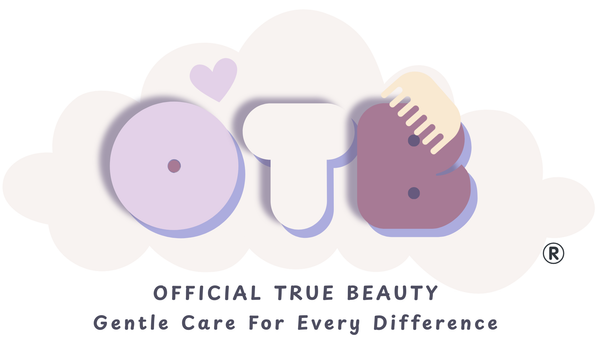Rutinas de baño para niños neurodivergentes
La hora del baño puede ser una rutina tranquila para algunos niños, pero para los niños neurodivergentes, puede ser uno de los momentos más abrumadores del día. Las luces brillantes, los sonidos impredecibles, los cambios de temperatura y las variaciones de textura pueden provocar incomodidad. Este blog está aquí para ayudarte a que la hora del baño sea más tranquila, segura y positiva con pequeños ajustes y decisiones sensoriales.
Por qué la hora del baño puede ser sobreestimulante
Los niños neurodivergentes (incluidos aquellos con autismo, TDAH, diferencias en el procesamiento sensorial u otras necesidades de apoyo) pueden experimentar una mayor sensibilidad a la información sensorial. Durante el baño, esto puede incluir:
- Temperatura o presión del agua impredecibles
- El eco del sonido en los baños
- La sensación de piel húmeda o texturas resbaladizas.
- Cambios en la iluminación o los olores
- Pérdida de control o transiciones repentinas
El objetivo no es eliminar todos los desafíos sensoriales: es crear más previsibilidad y brindarle a su hijo una sensación de seguridad, calma y elección.
Cómo hacer que la hora del baño sea más predecible
A continuación se muestran algunas formas de establecer una rutina constante que favorezca la comodidad de su hijo:
1. Utilice un programa visual o verbal
Hazle saber a tu hijo qué es lo que viene a continuación con una breve guía paso a paso: dicha en voz alta, ilustrada en tarjetas o incluso dibujada en una pizarra.
- Ejemplo: «Primero nos quitamos los calcetines. Luego abrimos el grifo. Luego comprobamos la temperatura».
2. Ofrecer control siempre que sea posible
Deje que su hijo elija:
- El aroma del jabón (o si lo quieren sin fragancia)
- La toalla que usarán después
- Si quieren jugar o terminar rápido
Tener una sensación de control puede hacer que las transiciones sean más fluidas y generar confianza en uno mismo.
3. Ajuste el entorno
- Utilice iluminación suave o de color en lugar de luces intensas en el techo.
- Calienta la habitación con un calentador antes de empezar.
- Utilice una alfombra de baño para evitar resbalones y ayudarlos a sentirse conectados a tierra.
- Limite el ruido de fondo y el eco con alfombras o toallas.
Uso de productos que favorecen el cuidado sensorial seguro
Elegir los productos adecuados puede marcar una gran diferencia en cómo un niño experimenta el tacto, el olfato y la rutina. Muchos padres de niños neurodivergentes descubren que usar menos productos, más sencillos y naturales, reduce tanto el estrés como las reacciones cutáneas.
Cuddle Cleanse : Nuestra barra de karité se puede moldear en formas como nubes, estrellas o animales. Esto ayuda a los niños a interactuar visualmente con el producto y a sentirse más cómodos. Su cremosa espuma se enjuaga fácilmente y no deja olores fuertes ni residuos.
Miracle Magic : un aceite suave que se puede aplicar antes o después del baño para suavizar la piel y el cuero cabelludo. Es especialmente útil si a tu hijo no le gusta la sensación de piel seca o tirante después de la exposición al agua, y también es seguro para aliviar la costra láctea.
Rizos de Mantequilla : Esta suave crema sin enjuague funciona tanto como crema para peinar como loción para la piel. Su textura aterciopelada se puede masajear en el cabello o aplicar en rodillas y codos secos, lo que la hace ideal para rituales de confort táctil después del baño.
Creando calma sensorial después del baño
Lo que sucede después del baño puede ayudar a reforzar una asociación positiva para la próxima vez. Intenta añadir:
- Un suave abrazo o un masaje de espalda con Shea Sweet o Miracle Magic
- Pijamas suaves o ropa secada con toalla sin etiquetas
- Dejar que su hijo “ayude” a frotar la loción o a elegir dónde aplicarla
- Un aroma relajante como lavanda y manzanilla o karité sin aroma si la fragancia es un desencadenante.
Menos presión = más éxito
No hay una única manera "correcta" de bañar a tu hijo. Algunas familias solo lo bañan por completo una o dos veces por semana, con toallitas o esponjas entre cada baño. No hay problema. Lo más importante es cómo se siente tu hijo durante y después: seguro, respetado y apoyado.
Reflexiones finales
Usted conoce mejor a su hijo. Algunos días serán más fáciles que otros, y el progreso no siempre es lineal. Pero al adaptar las rutinas, reducir los estímulos sensoriales y usar productos diseñados para niños neurodivergentes, puede crear una experiencia de baño que funcione para su familia.
Explora nuestra colección completa de aceites, limpiadores y cremas sensorialmente seguros en Official True Beauty .
